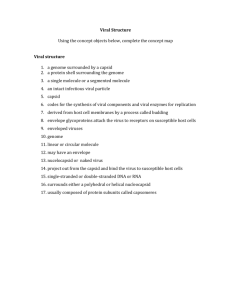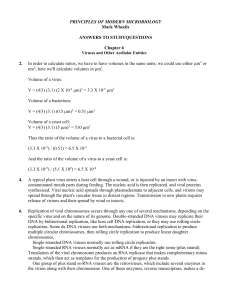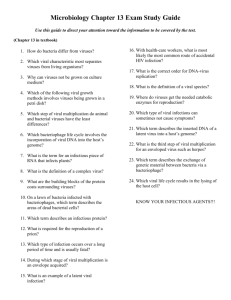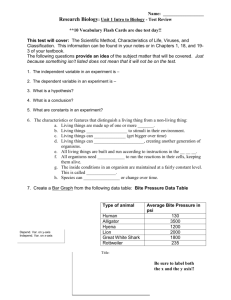Virus Replication Steps: A Comprehensive Guide
advertisement
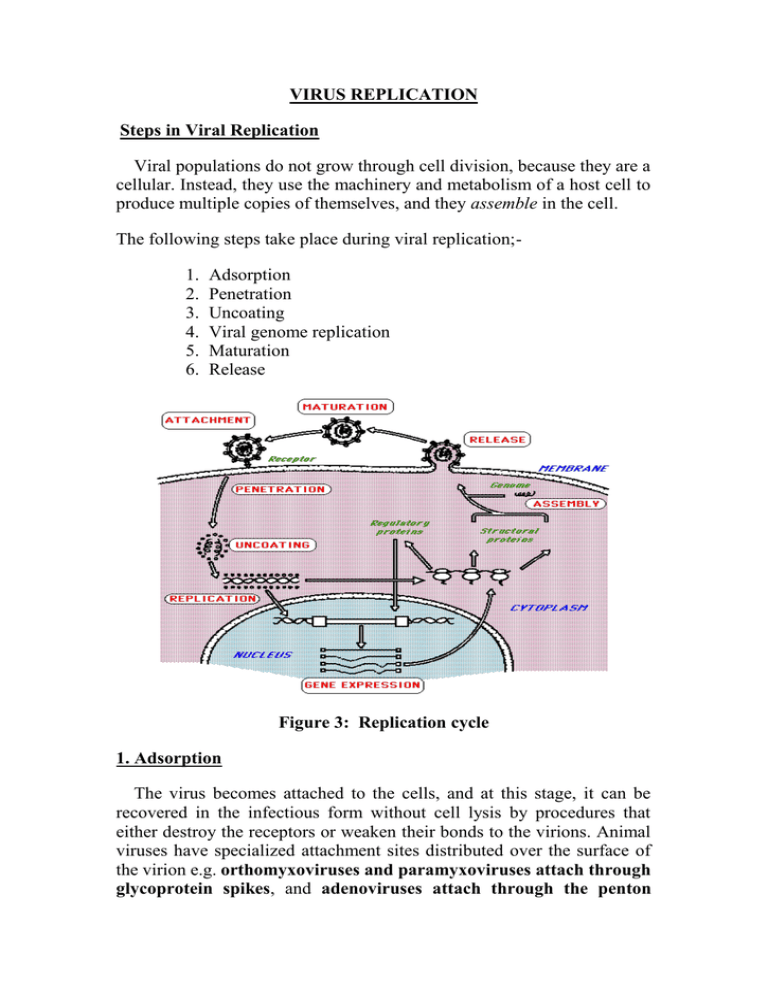
VIRUS REPLICATION Steps in Viral Replication Viral populations do not grow through cell division, because they are a cellular. Instead, they use the machinery and metabolism of a host cell to produce multiple copies of themselves, and they assemble in the cell. The following steps take place during viral replication;1. 2. 3. 4. 5. 6. Adsorption Penetration Uncoating Viral genome replication Maturation Release Figure 3: Replication cycle 1. Adsorption The virus becomes attached to the cells, and at this stage, it can be recovered in the infectious form without cell lysis by procedures that either destroy the receptors or weaken their bonds to the virions. Animal viruses have specialized attachment sites distributed over the surface of the virion e.g. orthomyxoviruses and paramyxoviruses attach through glycoprotein spikes, and adenoviruses attach through the penton fibers. Adsorption occurs to specific cellular receptors. Some receptors are glycoproteins, others are phospholipids or glycolipids. These are usually macromolecules with specific physiological functions, such as complement receptors for EBV. 2. Penetration Penetration follows attachment: Virions enter the host cell through receptor-mediated endocytosis or membrane fusion. This is often called viral entry. The infection of plant and fungal cells is different from that of animal cells. the process by which many hormones and toxins enter cells. The virion is endocytosed and contained within a cytoplasmic vacuole. 3. Uncoating Uncoating is a process in which the viral capsid is removed: This may be by degradation by viral enzymes or host enzymes or by simple dissociation; the end-result is the releasing of the viral genomic nucleic acid. 4. Viral Nucleic Acid Replication Replication of viruses involves primarily multiplication of the genome. Replication involves synthesis of viral messenger RNA (mRNA) from "early" genes (with exceptions for positive sense RNA viruses), viral protein synthesis, possible assembly of viral proteins, then viral genome replication mediated by early or regulatory protein expression. 5-Maturation and Release Following the structure-mediated self-assembly of the virus particles, some modification of the proteins often occurs. In viruses such as HIV, this modification (sometimes called maturation) occurs after the virus has been released from the host cell. Viruses can be released from the host cell by lysis, a process that kills the cell by bursting its membrane and cell wall if present. Some viruses undergo a lysogenic cycle where the viral genome is incorporated by genetic recombination into a specific place in the host's chromosome. The viral genome is then known as a "provirus" or, in the case of bacteriophages a "prophage". Whenever the host divides, the viral genome is also replicated. The viral genome is mostly silent within the host; however, at some point, the provirus or prophage may give rise to active virus, which may lyse the host cells. Enveloped viruses (e.g., HIV) typically are released from the host cell by budding. During this process the virus acquires its envelope, which is a modified piece of the host's plasma or other, internal membrane. DNA viruses The genome replication of most DNA viruses takes place in the cell's nucleus. except poxviruses which replicate in the cytoplasm. RNA viruses Replication usually takes place in the cytoplasm. except retroviruses , influenza virus and hepatitis virus which replicate in the nucleus . Reverse transcribing viruses These have ssRNA (Retroviridae, Metaviridae, Pseudoviridae) or dsDNA (Caulimoviridae, and Hepadnaviridae) in their particles. Reverse transcribing viruses with RNA genomes (retroviruses), use a DNA intermediate to replicate, whereas those with DNA genomes (pararetroviruses) use an RNA intermediate during genome replication.
